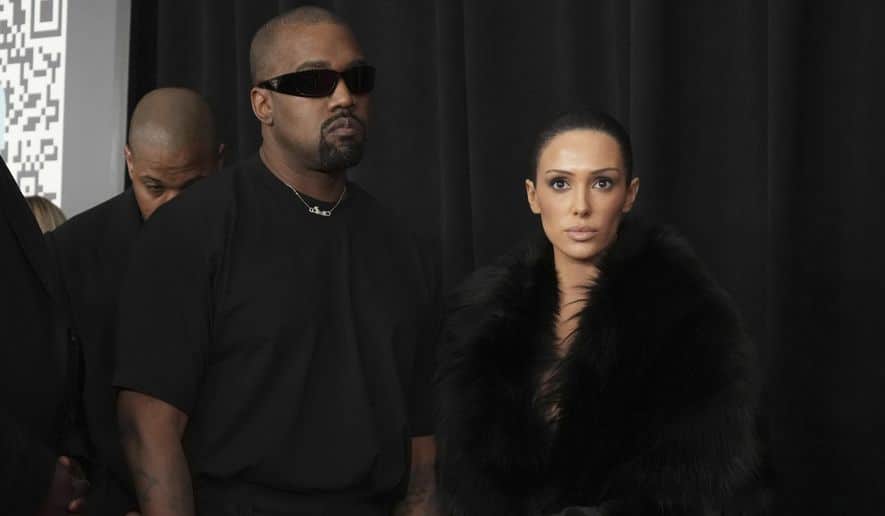During the biggest night in music, the 2025 Grammy awards ceremony, Kanye’s wife, Bianca Censori, caused quite a commotion by walking the red carpet when she removed her coat to reveal . . . just about everything. Her dress, if you can call it that, was completely sheer. And after I uttered, “Well, that’s a . . . choice,” I started thinking about the legalities associated with employee dress codes (as one does).
Dress Codes Generally
How your employees dress should reflect your company culture. Whether you have a dress-up or dress-down culture, employers should clearly define dress code expectations and communicate them to employees. Your guidelines should be relatively simple. Provide clear examples of what is and what is not acceptable in your workplace (jeans and polo shirts – in; see through dresses that leave nothing to the imagination – out). Employers should use gender neutral language in describing appropriate attire (long gone are the days of requiring women to wear panty hose and skirts). Also consider the diversity of your workforce and the possibility that some employees may prefer to wear their own cultural attire in the workplace.
If any of your employees work remotely or if you use videoconferencing in your business, you should also review your policies to determine if they even address how your employees should be presenting themselves when they are “on camera” either doing business in-house or with customers, vendors, etc. Make it clear what is acceptable and what is not while the employee is “on camera” representing the company.
Accommodations and Dress Codes
Under Title VII, employers are required to reasonably accommodate employees with disabilities and employees who have closely held religious beliefs. ThoseThese accommodations may include modifications to the employer’s dress code for that employee. Employers should engage in the interactive process with any employee who requests a modification to the company’s dress code. Remember, under Title VII, employers must now accommodate an employee’s closely held religious belief unless the accommodation would cause the employer undue hardship.
The NLRA and Dress Codes
In 2022, the NLRB issued Tesla, Inc., 370 NLRB No. 131 (2022), which held that workplace uniform rules limiting employees’ ability to wear union apparel or insignia are unlawful absent a showing of “special circumstances.” In the Tesla opinion, the Board gave examples of special circumstances which included, “when their display may jeopardize employee safety, damage machinery or products, exacerbate employee dissension, or unreasonably interfere with a public image that the employer has established, or when necessary to maintain decorum and discipline among employees.” But these exceptions have rarely been recognized outside of the healthcarehealthcare or retail settings. Keep in mind, however, that the definition of “special circumstances” will likely broaden under the second Trump administration.
The FLSA and Uniforms
Not all dress codes require uniforms but if you require hourly employees to wear certain attire, particularly if the attire is branded or otherwise recognized as part of your brand, you need to be sure you comply with the FLSA. If an employer requires an employee to wear a uniform, the cost and maintenance of that uniform is considered a business expense of the employer under the FLSA. This means that if the employee is required by the employer to bear the cost, it may not reduce the employee below the federal minimum wage of $7.25 per hour. For example, if an employer pays an employee $8 per hour and the employee works 20 hours per week, an employer cannot legally deduct more than $15 ($0.75 x 20) for the cost of the uniform for that work week. (Remember, many states have rules regarding how to legally deduct from employee paychecks as well). Further, the cost of maintaining the uniform may have to be borne by the employer if the uniform is something other than “wash and wear” which the employee can launder with their own clothing. The DOL has some useful guidance regarding uniforms and the FLSA here: https://www.govinfo.gov/content/pkg/GOVPUB-L36-PURL-gpo24664/pdf/GOVPUB-L36-PURL-gpo24664.pdf
Clothing and Hate speech
And speaking of Kanye . . . Recently Kanye West made headlines when he marketed and sold a swastika t-shirt. Remember, hate speech is never protected speech, and should be banned in your workplace. Any employee who uses their work attire to engage in hate speech should be subject to disciplinary action, up to and including termination.
Rachel Ullrich (Dallas, TX) is a partner at FordHarrison.
The post <strong>Kanye’s Wife’s Grammy Dress Provides a Lesson in Dress Codes</strong> appeared first on HR Daily Advisor.
